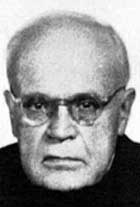Emilio Francisco Lisson Chavez

Born in Arequipa, Peru, in 1872, Emilio Lissón joined the Congregation of the Mission and was ordained priest in 1895 in Paris. Pope St. Pius X named him bishop of the Amazon diocese of Chachapoyas in 1909, where he carried out great evangelical ministry. He was 37 years old then and he went about his diocese, with the help of the natives, in a canoe as well as on foot. At age 46, in 1918, he was named archbishop of Lima by Benedict XV. There he opened four smaller seminaries and founded a Christian newspaper, and visited parishes which no prelate had visited for over 400 years.
Archbishop Lissón was forced to resign his episcopal see in 1931 due to pressures from the Peruvian authorities who accused him of “interference in politics, of bad administration, and of having little theological formation.” Lissón was summoned to Rome where lived virtually as an exile. Following the exile came misunderstandings, poverty, loneliness and the abandonment of him by even his most intimate collaborators. He was forced to work as a tour guide in order to pay for the cost of residing, from 1931 thru 1940, at the International House of the Congregation of the Mission in Rome. During his stay in Rome, he got acquainted, at the Catacombs of St. Callistus, with Marcelino Olaechea Loizaga, a Salesian priest, with whom he subsequently struck up a deep friendship. While in Rome, Lissón also studied archaeology and church history and attended to the spiritual needs of various religious communities.
Lissón was allowed to go to Spain in 1940 upon the invitation of Marcelino Olaechea who had become the bishop of Pamplona in 1935. Lissón moved with Olaechea to Valencia when Olaechea was appointed archbishop of this archdiocese. While in Valencia, Lissón administered the sacraments to thousands of young people, ordained numerous priests, made pastoral visits throughout the archdiocese. He put himself at the service not only of the archdiocese of Valencia but also of the Church in Spain as a whole and its conference of bishops. Many people apparently sensed and valued his holiness and wanted, so the speak, a piece of the holy man. His Vincentian confreres in particular wanted him to live with them in Madrid. Archbishop Olaechea supposedly reacted to the suggestion by saying: “While I am alive, Archbishop Lissón will not leave this place, dead or alive. His presence among us is God's blessing upon the diocese.” Archbishop Olaechea is said to have attested that Lissón “practiced in a heroic degree the virtues of charity, humility, obedience and poverty.”
Another testimony has it that, as archbishop of Lima, Lissón used to visit the districts where the poor lived in the city. During one of these visits, a family approached him in an alley to ask for money. Not having it, the archbishop removed his episcopal ring and gave it to the family so they could pawn it. It is also said that then President Augusto B. Leguía gave the archbishop a car as a gift because the latter used to take the street car to get around. Lissón sold the car, however, to use the proceeds for his social projects for the benefits of the sick and the aged. When Leguía reportedly offered him another car, he made clear to the archbishop that he was just lending it to him.
Archbishop Lissón died in Valencia on December 24,1961. He was buried in the cathedral where his body stayed incorrupt for thirty years. Upon the request of the Primate of Peru and other Peruvian bishops, Lissón's mortal remains were transferred in 1991 to Lima and are now in the Lima cathedral. Lissón's detractors had asked for forgiveness and recognized the injustice of their allegations. The cause of his canonization was opened in Valencia, Spain, on September 20, 2003.
To read in original Spanish the primary source for this entry cf. http://www.vincenziani.com/profilolisson.htm.
To watch a youtube video in Spanish, click on: http://www.youtube.com/watch?v=-M7zO6Tn3nA
